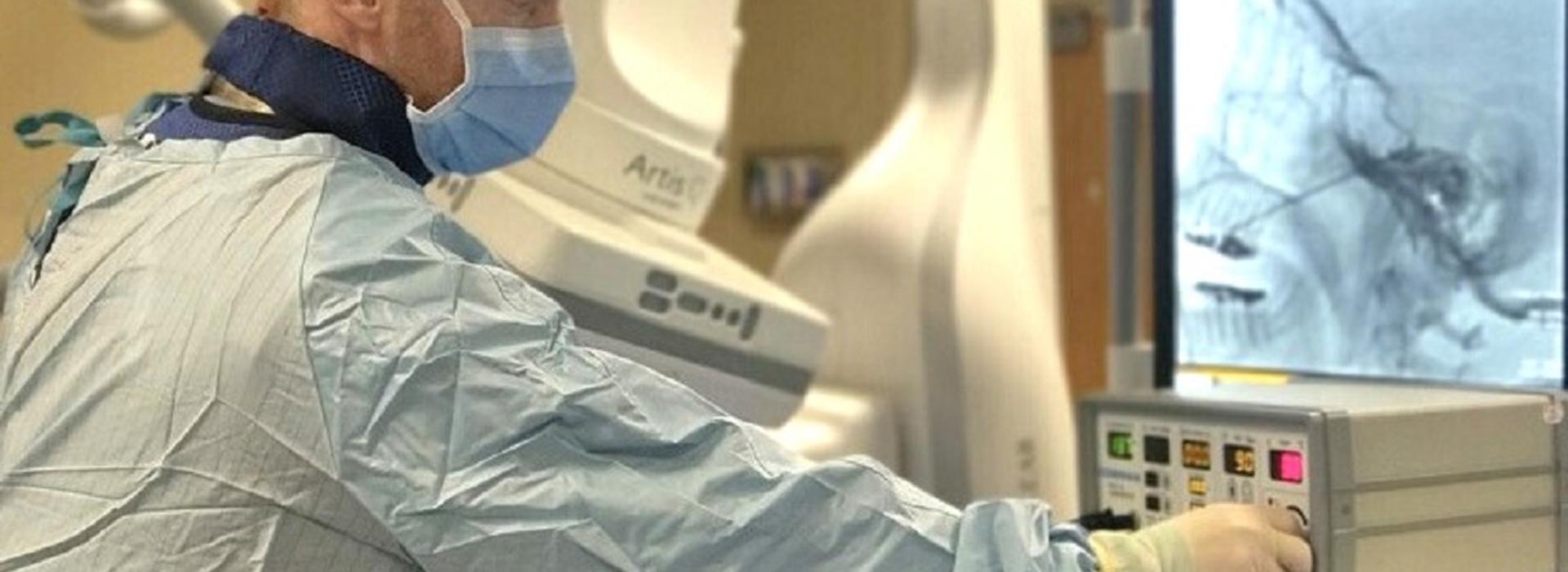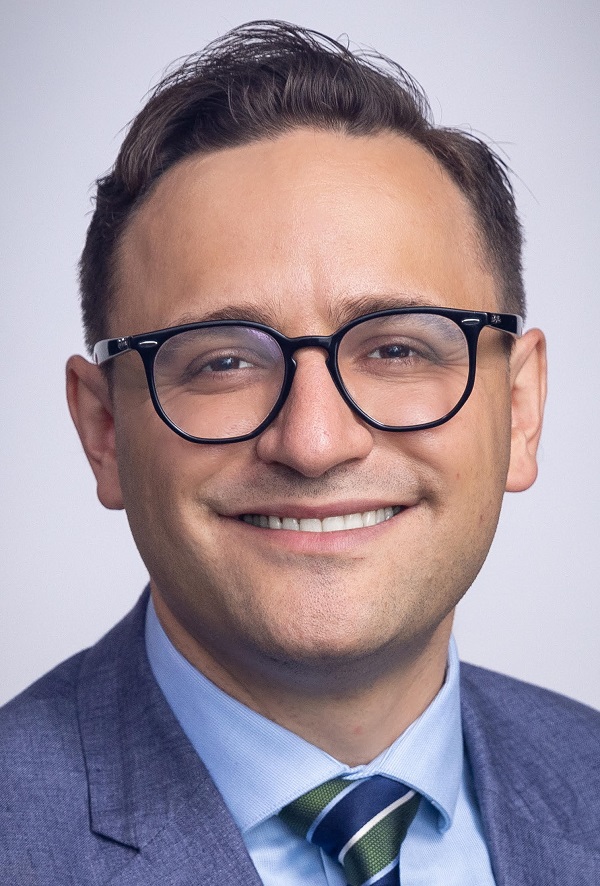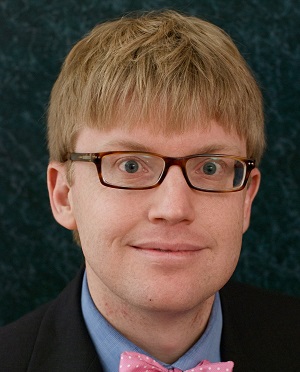
Renowned U of M facial pain program inspires visit from University of New Mexico neurosurgeon
Having just started his functional neurosurgery practice for movement disorders and epilepsy at the University of New Mexico in Albuquerque, Michael Kogan, MD, PhD, made an important decision. He reached out to U of M neurosurgeon Andrew Grande, MD, and asked if he could come to Minnesota and observe Grande’s facial pain practice.

Use more education
“Part of a multidisciplinary functional neurosurgery program is treating facial pain and providing other kinds of pain management. I did have some training on open procedures but in terms of minimally invasive options, I felt like I could use more education,” said Kogan (pictured here). “I came to observe Dr. Grande to be able to offer more options for my patients with facial pain.”
Kogan wanted to learn about the minimally invasive percutaneous procedures that Grande and his team regularly perform. During such a procedure, access to the nerve causing the facial pain is achieved via needle puncture of the skin. Once inserted, fluoroscopic guidance is used to position the needle to either insert a balloon to crush the trigeminal ganglion or the nerve is burned using radiofrequency. “There are many nuances associated with guiding the needle through the appropriate opening in the skull and when you get it in place, there are additional nuances regarding how you treat the nerve,” said Grande. “It’s more art than science.”
Unique practice
What prompted Kogan to pick the U? “Dr. Grande’s practice stands out – even in the facial pain community – as unique in terms of volume and scope,” he said. “I’ve had some very challenging cases come up and wasn’t sure what to do. He seems to deal with similar cases rather routinely.”

Grande (pictured here) believes there isn’t another facial pain program in the country as well developed as that of the U. “The breadth of the experience and expertise that’s available to us, from dentistry, ENT and radiology to psychology and pharmacy, is outstanding,” he said. “In addition, the support provided in the Facial Pain Clinic by our nurse practitioner, Seena George, helps manage our high patient volumes and all the procedures we provide.” The team is also renowned for its facial pain research.
Different techniques
To ensure that Kogan had a meaningful experience, Grande and the facial pain team lined up seven cases for him to observe over the two days of his visit. Keep in mind that these facial pain conditions are extremely rare. “Most neurosurgeons don’t do this procedure at all, they just offer MVDs*,” said Kogan. “There isn’t a comprehensive platform for dealing with facial pain. And the ways in which Dr. Grande uses the percutaneous technique were different than others I’ve seen, which was useful.”
Grande believes that it's good to share the U of M facial pain program with others. “For those who don’t have the full toolbox, we are happy to help them develop it,” he said. “Percutaneous procedures are ideal candidates for this kind of development. In many residency programs, these procedures aren’t taught as much. If others want to learn about them like Dr. Kogan did, we would be happy to help.”
Great experience
Kogan recommends the experience he had at the U to anyone. “Absolutely,” he said. “You get so much training in your residency but there are a lot of things you don’t learn. And technology and procedures change over time. It’s a good idea for everyone to go out and see how others do things. The experience with Dr. Grande was great; anyone who doesn’t have this technique in their offering would benefit from seeing it.”
Grande believes that the percutaneous procedures need apprenticeship type training. “People need to come and observe several procedures,” he said. “They should also have the opportunity to do proctorship or telemedicine – some way to have a person standing over their shoulder to guide them when things don’t go as expected.”
Observe someone who does the procedure a lot
Anytime you learn one of these procedures, it’s good to go to someone who does a lot of it, according to Kogan. “It’s also good to go to someone who has a different perspective and who does it in a different way than you were taught or are comfortable with,” he added.
If you’re interested in an experience like the one Kogan had, please email Grande: grande@umn.edu. “We will set up a tailored experience to give you what you need to provide the best facial pain treatment in your own practice.”
* During the microvascular decompression (MVD) procedure, the skull is opened, and the neurosurgeon uses a microscope to go into the trigeminal nerve and identify the blood vessel causing the compression.



